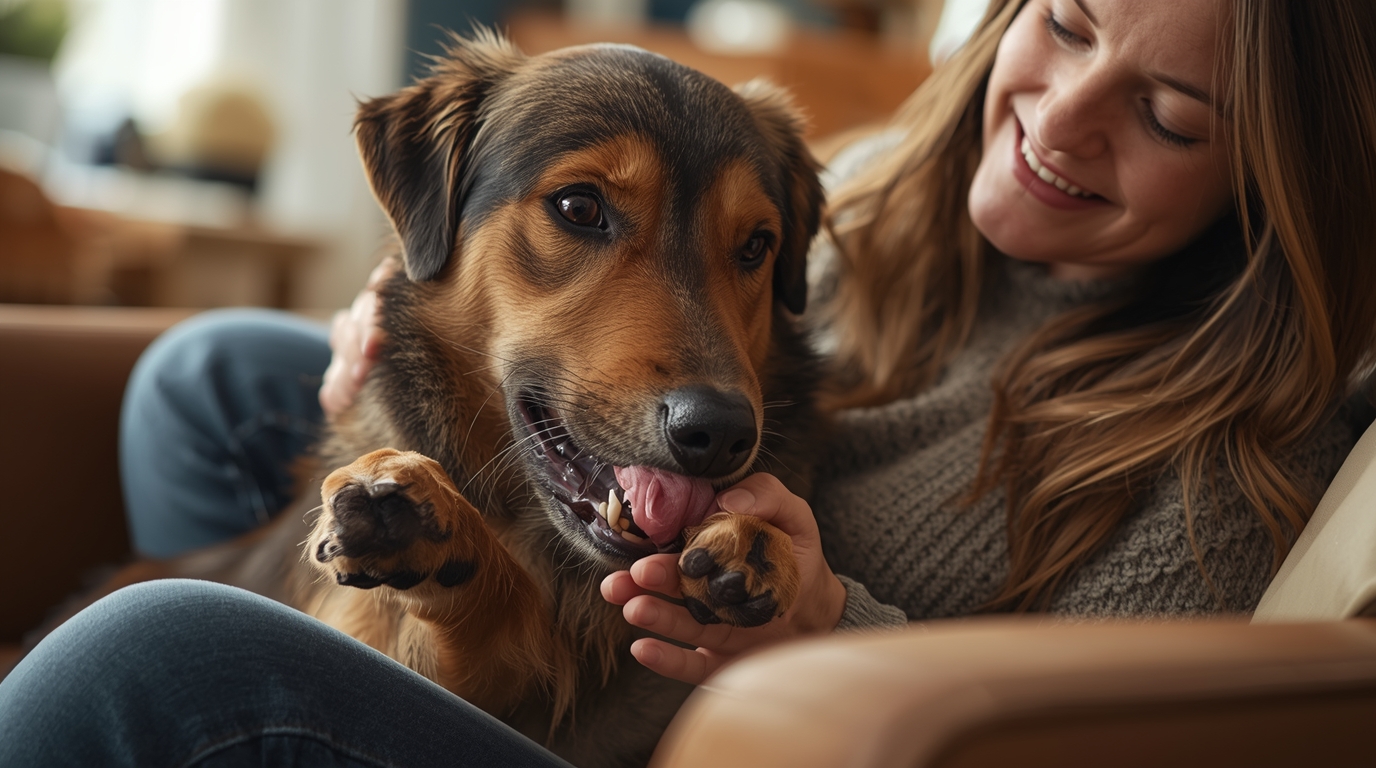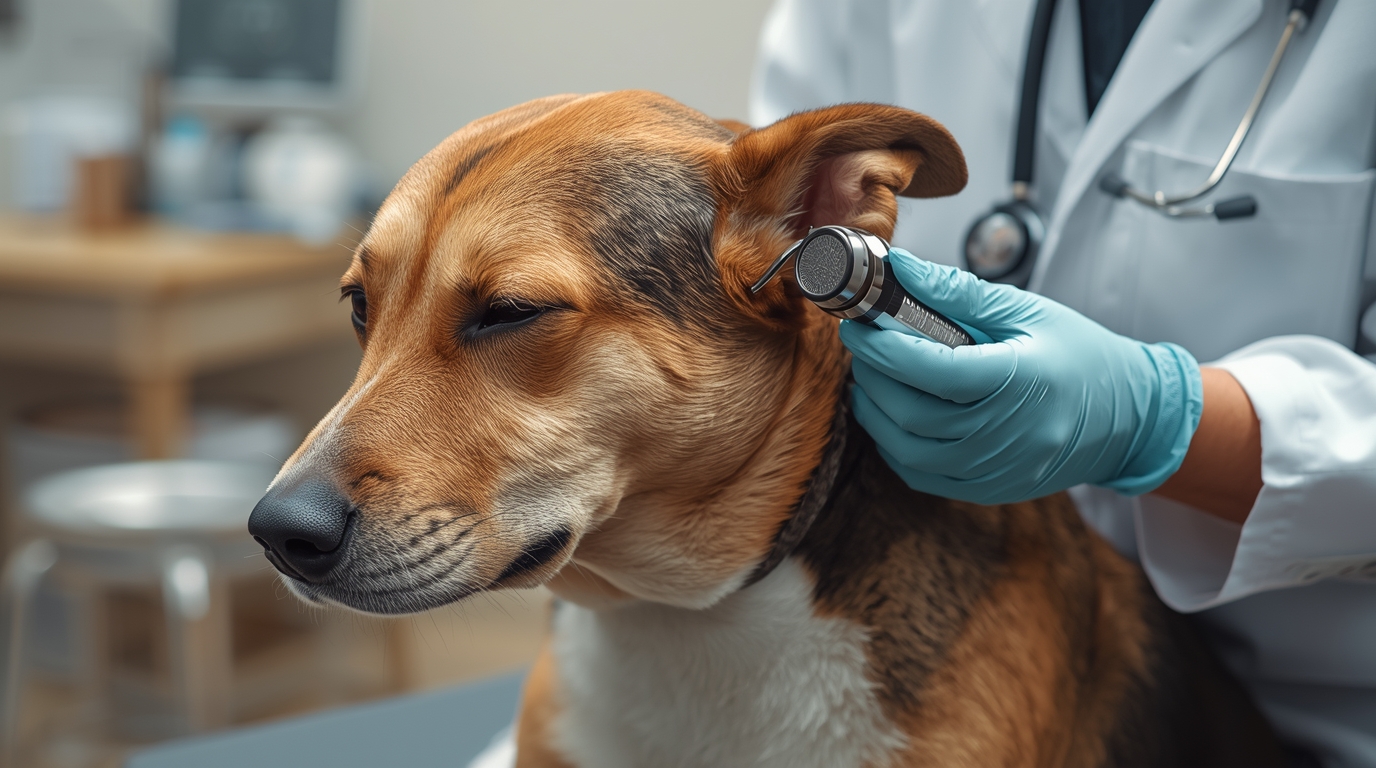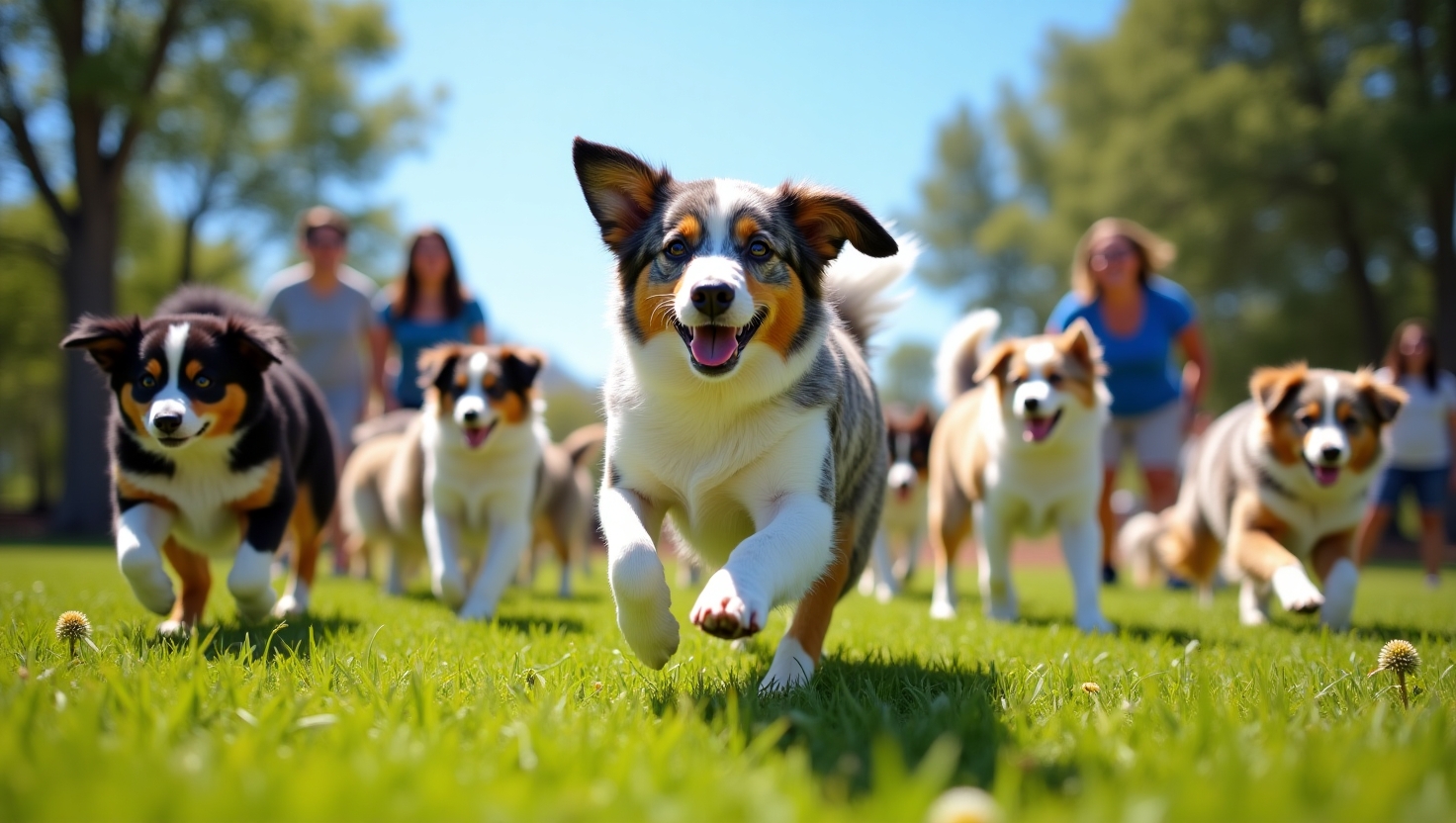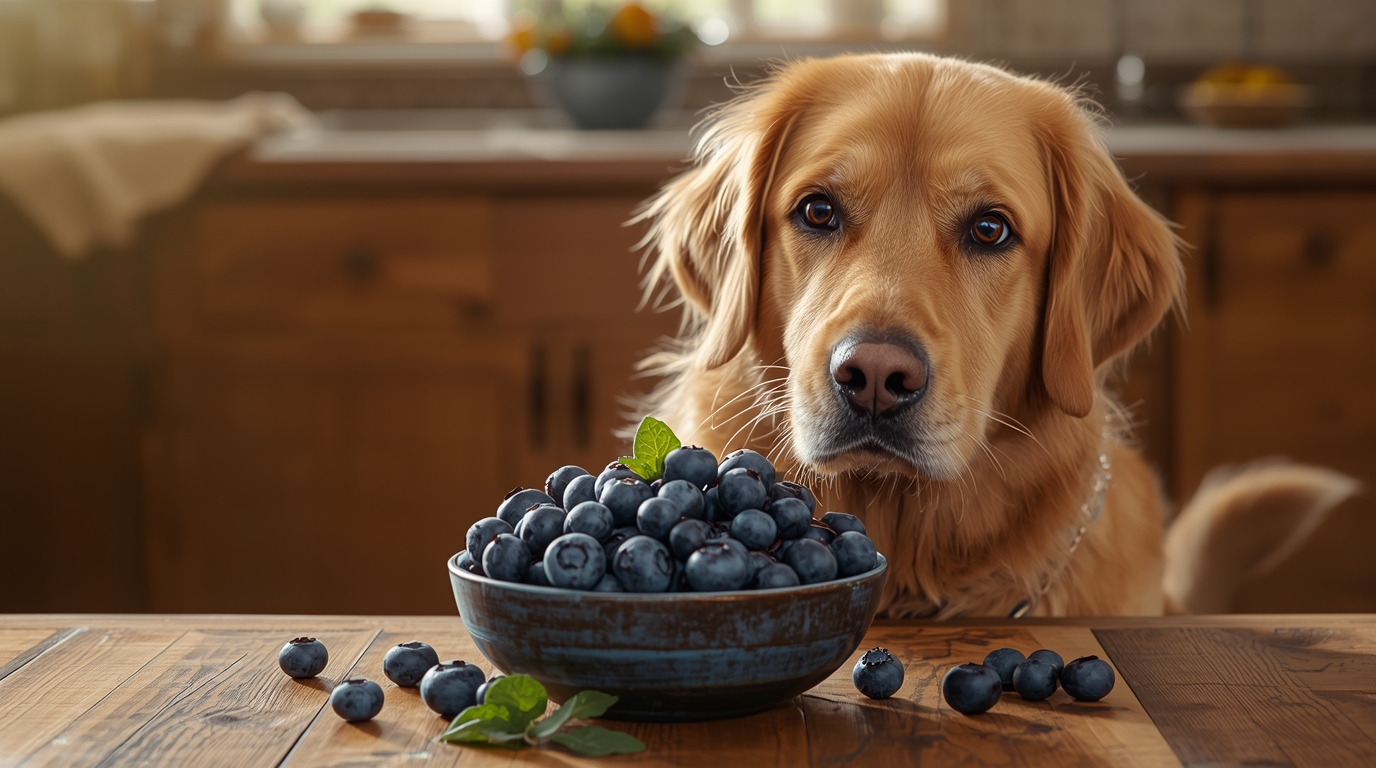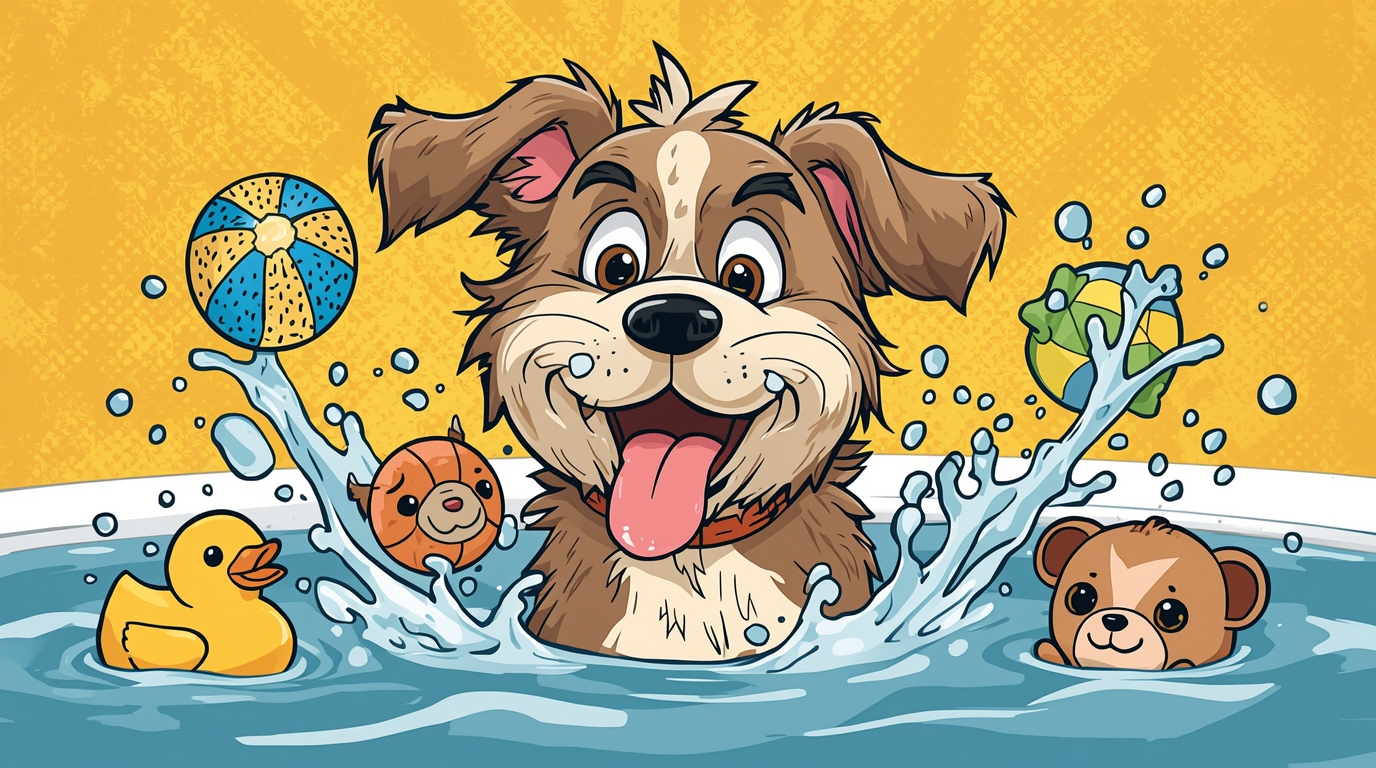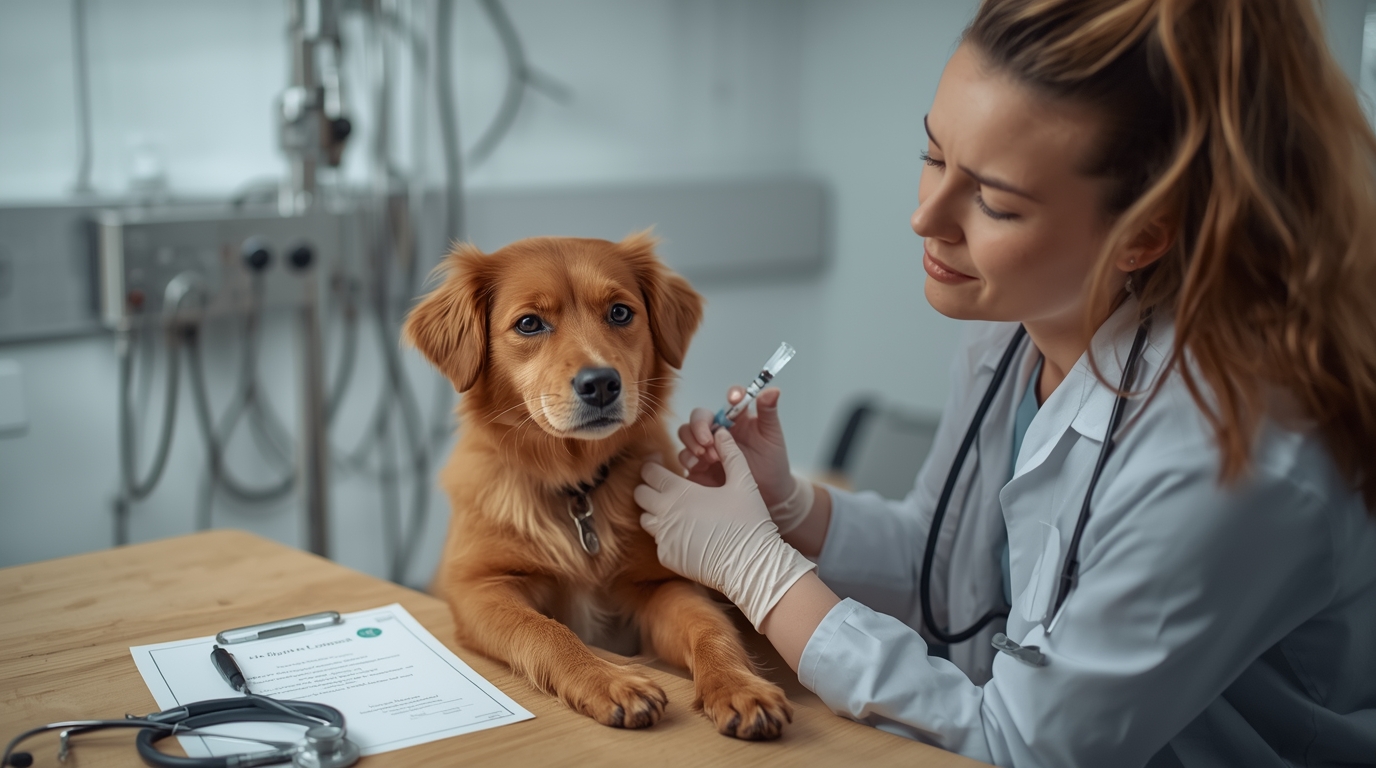Introduction:
It is not uncommon to notice a dog freeze in the middle of a walk, lift a paw, and start to lick. why do dogs lick their paws? 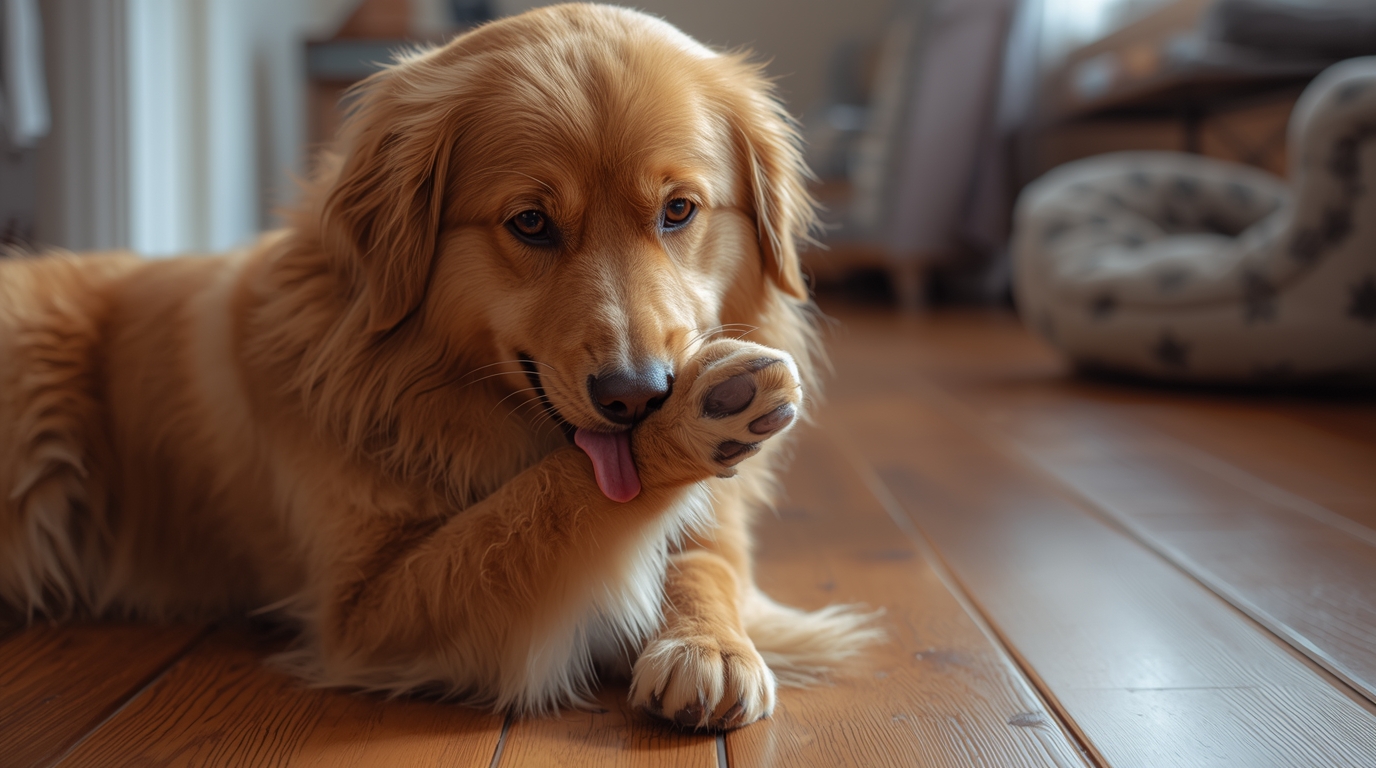 However, when it is persistent or repetitive, it can be a sign of something more severe. If you are in Australia and have been observing your dog licking its paws excessively, this guide assists you in comprehending the reasons, how to observe warning signs, and what you can do to make your dog comfortable.
However, when it is persistent or repetitive, it can be a sign of something more severe. If you are in Australia and have been observing your dog licking its paws excessively, this guide assists you in comprehending the reasons, how to observe warning signs, and what you can do to make your dog comfortable.
What’s Normal: Frequent Paw Licking vs Problem Behaviour
All dogs groom themselves, which is usually by licking. If your dog is licking its paws for a short while after walking, if there is dirt, or after playing outdoors, that’s nothing to worry about. That’s natural grooming, a way to remove irritants.
It is a concern when paw licking is frequent, persists for extended durations, or disrupts sleep or play. You may notice redness, swelling, prolonged chewing, or open sores. In such situations, digging deeper is vital.
Common Causes of Dog Licking Paws in Australia
These are the most common reasons Australian dogs lick their paws – knowing them makes it easier to fix the cause.
Allergies (Environmental & Food)
Dogs may be allergic to grasses, pollen, molds, dust mites, or foods such as beef, chicken, or dairy. Environmental allergens are particularly prevalent during some times of the year in areas such as Queensland or parts of NSW. One of the earliest signs is usually paw licking.
Fleas, Ticks, Mites & Parasites
External parasites cause skin irritation. One flea bite or mites between pads on the paw can result in excessive licking. Regions such as northern Australia, wet or damp areas, tend to have greater parasite pressures.
Skin Infections (Yeast or Bacterial)
Hot, sweaty paws (after wet walks, swimming, or humidity) may be a yeast or bacterial breeding ground. Infections frequently are bad-smelling, red, with discharge, and painful.
Injury, Foreign Bodies & Burns
Dogs walk on hard surfaces, hot asphalt (particularly Australian climate), frequently collect thorns, glass, pebbles, or chemical irritants. These tend to result in localized paw licking. A minor cut, nail fracture, or pad burn is frequent.
Dry Skin & Environmental Irritation
Drying of paws due to over-bathing, low humidity (particularly winter in southern Australia), or contact with irritant chemicals (weed sprays, cleaners, salt in seaside areas) results in itching and licking.
Anxiety, Stress & Boredom
Dogs will occasionally lick as a self-soothing behavior. Transitions like new home, noisy thunderstorms, separation, or inactivity/mental stimulation deficiencies may lead them to lick paws more in an attempt to calm themselves down. This may become habitual if left untreated.
Lick Granuloma / Chronic Licking Problems
When paw licking becomes compulsive, an obsession known as lick granuloma (serious localized region where skin becomes thickened or raw from persistent licking) can occur. This requires the attention of a veterinarian.
How to Know If Paw Licking Is an Issue
To determine if paw licking goes from “normal grooming” to “something that needs attention,” look for these clues:
- Licking that persists for extended periods (many times daily, for many days)
- Redness, swelling, or tender pads (sensitive skin between toes, pads are sensitive to touch)
- Unpleasant, strong odours from the paws
- Paw discoloration or fur coloration (saliva stains)
- Behavioural changes: limping, not willing to put paw down, not wanting to go for walks, irritability
If you notice these, it’s time to intervene.
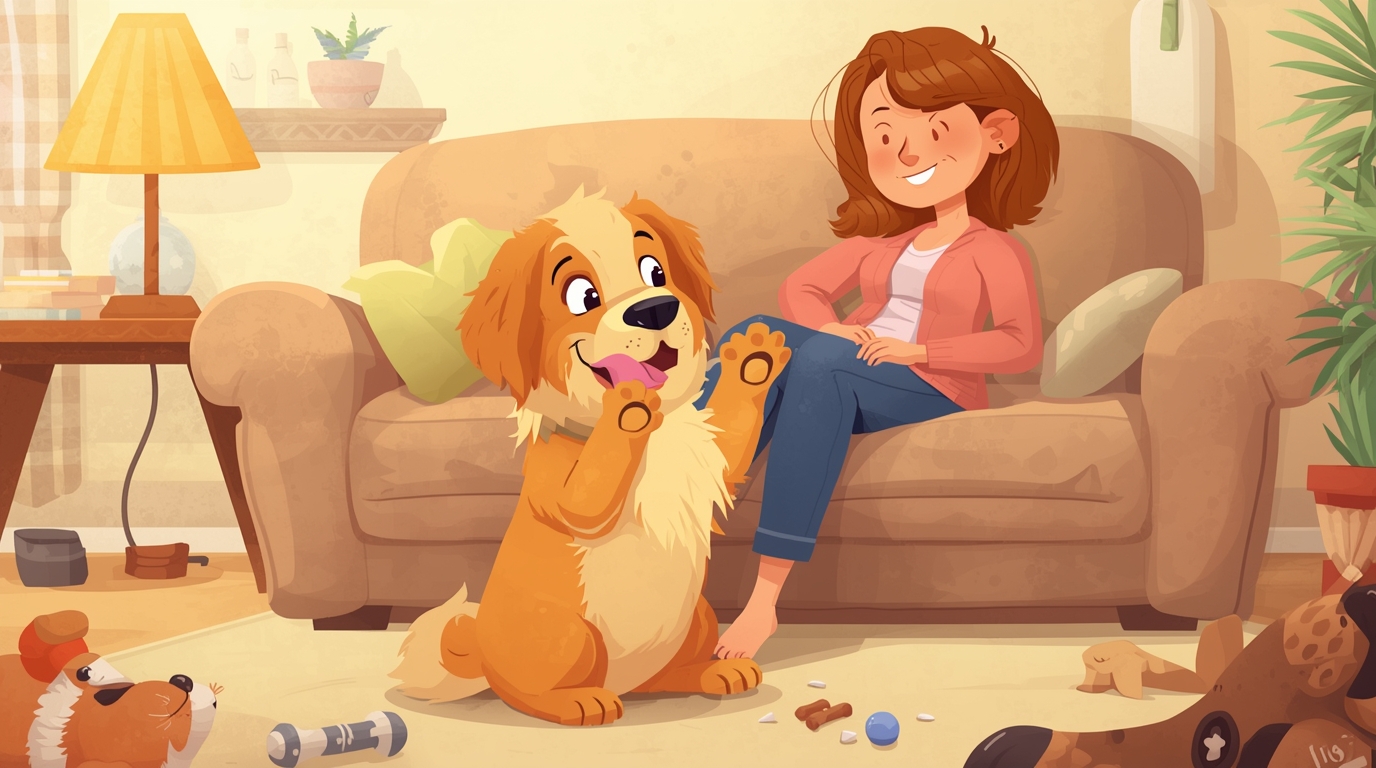
What You (As an Australian Dog Owner) Can Do
Here’s how to tackle dog licking paws issues, utilizing practical steps based on veterinary recommendations from Australia.
Examine and Clean Paws after Walks
Rinse paws with clean water if they are wet or muddy. Dry carefully between pads. Trim hair between toe pads if that hair is retaining moisture.
Examine for Foreign Body or Injury
Search for thorns, glass, burrs, cracked pads, broken nails. If you do find something, remove slowly or consult your vet if necessary.
Apply an Appropriate Paw Care Product
Dog pad balms, calming creams (vet approved), yeast-killing washes, or mild wipes may diminish irritation. Ensure safe products for dogs and use as directed.
Parasite Control
Apply proper flea/tick prophylaxis appropriate to your area. Routine deworming if advised.
Assess Diet and Potential Allergies
Discuss food quality with your vet. Explore hypoallergenic diets in case of food suspicion. In some cases, an elimination diet is useful in determining offending ingredients.
Deal with Stress & Boredom
More exercise, more play, puzzle toys, chew toys. If they are anxious, calm routines, regular schedules, perhaps behaviour training assist.
Vet Visits When Necessary
Should there be infection, repeated licking, wounds, or evidence such as swelling or limping, a vet check is in order. They can prescribe medicated creams, antibiotics, or suggest additional diagnostics.
Australian Context & Seasonal Tips
Due to Australia’s diverse climate, there are local considerations on how frequently dogs lick paws and what response you should have.
Summer pavement burns: hard surfaces of concrete and asphalt quickly get hot. Pads often get licked by dogs walking on hot surfaces. Walk early morning or early evening, or apply paw protector wax or booties.
Wet season & humidity: In subtropical and tropical areas (such as far north Queensland), paws tend to remain wet longer following rain. Moisture leads to yeast and bacterial growth, so drying is necessary.
Cold southern winters: Dryness indoors and heating can dry out skin and cause it to crack. Balms to moisturize and more infrequent bathing help.
Pollen seasons (spring particularly in most areas): Allergens in the environment cause increased paw licking from exposure to grasses or pollens. Wiping paws after time outdoors is helpful.
FAQs: Why Do Dogs Lick Their Paws?
Q1. Is it usual for dogs to lick their paws every now and then?
Yes, incidental paw licking is normal as part of regular grooming, particularly after walks, swimming, or caking up paws.
Q2. At what point does paw licking become excessive?
When it occurs repeatedly during the day, it causes noticeable irritation (redness or swelling), affects sleep or activity, presents odor or discharge, or damages the skin.
Q3. May allergies lead to paw licking in dogs?
Yes. Food-allergies as well as environmental allergies (grass, pollen, dust) are frequent causes. Dogs with allergies tend to lick paws to calm them.
Q4. How can I prevent my dog from licking its paws?
Clean and dry paws, take out irritants, employ veterinarian-endorsed products, modify diet when necessary, minimize stress/boredom, good grooming, and obey vet care when infections or injury are involved.
Q5. Might licking paws be a sign of pain?
Yes. Injuries, arthritis, or something stuck in the paw can lead to licking. Sudden ones will limp, flinch when you touch the paw, and look for vet treatment.
Check this: Dog Ear Cleaner: The Ultimate Aussie Guide
Final Thoughts
Dogs lick their paws for a variety of reasons ranging from completely benign grooming to indicators of allergies, stress, or infection. For Aussie owners, knowing what’s causing the licking is essential. Watching when, how often, and under what circumstances your dog licks allows you to determine if it’s normal or an indication that something is your concern.
If your dog is excessively licking their paws, don’t overlook it. Clean, dry, inspect, and if necessary, visit your vet. With prompt attention, most dogs quickly recover and return to happy, healthy paws. thes

